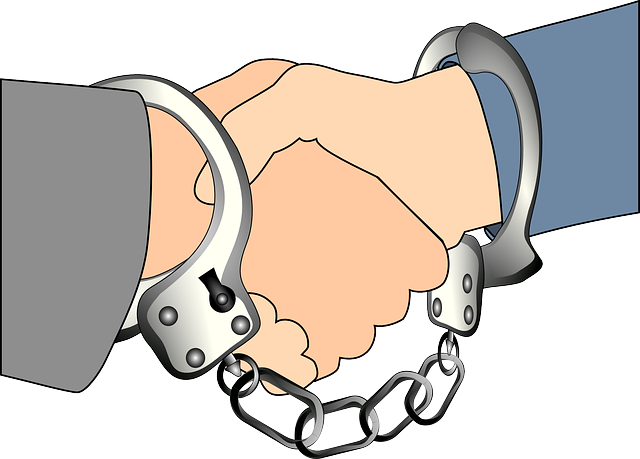In the ride-sharing industry, driver accountability is paramount for safety and legal adherence, with a key focus on preventing and managing Ride-Sharing Driver DUI cases. This involves comprehensive background checks, regular training, advanced monitoring systems, and zero-tolerance policies. Collaboration between firms, law enforcement, and legal professionals ensures accountability while protecting driver rights. With unique legal challenges for drivers accused of DUI, understanding employment definitions is crucial for successful defenses. Future advancements in technology, such as ADAS, AI, data analytics, and blockchain, will further strengthen driver accountability and passenger safety.
In the dynamic landscape of ride-sharing, ensuring passenger safety is paramount. This article delves into the critical aspect of Ride-Sharing Driver Accountability, exploring key areas such as understanding driver responsibilities, the role of DUI Defense in this industry, and legal implications. We discuss best practices to enhance safety measures and analyze future trends shaping accountability. By examining these factors, we aim to highlight the complexities and solutions within the ride-sharing ecosystem, emphasizing the importance of responsible driving practices, especially regarding Ride-Sharing Driver DUI Defense.
- Understanding Ride-Sharing Driver Accountability
- The Role of DUI Defense in Ride-Sharing Industry
- Legal Implications for Ride-Sharing Drivers
- Enhancing Safety Measures: Best Practices
- Future Trends in Ensuring Driver Accountability
Understanding Ride-Sharing Driver Accountability

In the realm of ride-sharing, ensuring driver accountability is paramount for safety and legal compliance. Ride-Sharing Driver Accountability involves a multifaceted approach to verify and maintain the integrity of drivers who operate under popular ride-hailing platforms. This includes rigorous background checks, regular training sessions on road safety and passenger handling, and robust monitoring systems to track driving behavior.
One critical aspect that demands significant attention is preventing and addressing Ride-Sharing Driver DUI (Drunk Driving Under Influence) cases. Effective defense mechanisms are in place for such instances, where advanced alcohol detection technology and strict zero-tolerance policies help maintain a safe environment for both drivers and passengers. Regular updates on legal protocols and a collaborative effort between ride-sharing companies, law enforcement, and legal experts ensure that drivers are held accountable while protecting their rights.
The Role of DUI Defense in Ride-Sharing Industry

In the ride-sharing industry, ensuring safety is paramount. One significant aspect of this is addressing driver accountability, particularly when it comes to incidents involving alcohol and driving under the influence (DUI). DUI defense plays a crucial role in maintaining public trust and regulating the ride-sharing sector.
Ride-sharing companies are increasingly relying on robust legal frameworks and advanced technology to monitor driver behavior. Effective DUI defense mechanisms help establish clear guidelines, promote responsible driving, and ensure that drivers face severe consequences for any violations. This, in turn, creates a safer environment for passengers and reinforces the industry’s commitment to accountability.
Legal Implications for Ride-Sharing Drivers

Ride-sharing drivers, like any other professional behind the wheel, face significant legal implications, particularly in cases involving alcohol and driving. The rise of ride-sharing services has brought new challenges to traditional DUI (Drunk Driving) laws, as these drivers are not only employees but also independent contractors, creating a complex web of liability. When a ride-sharing driver is accused of DUI, their defense strategy must consider both the company policies and legal precedents unique to this sector.
In many jurisdictions, the legal definition of employment plays a crucial role in determining liability. A successful DUI defense for a ride-sharing driver might hinge on establishing whether they were acting as an independent contractor or an employee during the incident. This distinction can significantly impact access to company resources, insurance coverage, and potential legal defenses. With companies like Uber and Lyft facing numerous lawsuits related to driver accountability, understanding these legal complexities is more important than ever for both drivers and the ride-sharing industry at large.
Enhancing Safety Measures: Best Practices

Ensuring safety is paramount in the ride-sharing industry, and it begins with holding drivers to high standards. One of the most significant concerns is preventing drunk driving (Ride-Sharing Driver DUI Defense). Ride-sharing companies should implement robust screening processes during driver onboarding to weed out potential risks. This includes thorough background checks, including verifying driving records and conducting drug tests when necessary.
Additional best practices include mandatory safety training programs that educate drivers on responsible riding habits, emergency response procedures, and customer interaction protocols. Regular updates on safety guidelines and the encouragement of open communication between drivers and passengers can create a culture of accountability. Technology also plays a role; drivers should be equipped with tracking devices and in-app reporting systems to facilitate quick responses to any safety incidents.
Future Trends in Ensuring Driver Accountability

As technology evolves, so too will the methods employed to ensure accountability among ride-sharing drivers. One emerging trend is the integration of advanced driver-assistance systems (ADAS) that can monitor and record a driver’s behavior in real time. These systems could alert authorities or dispatchers if a driver exhibits signs of impairment or distracted driving, potentially acting as a powerful deterrent for those considering operating under the influence (DUI). Additionally, artificial intelligence and machine learning algorithms are likely to play a significant role in identifying patterns and anomalies in driver behavior, enabling companies to proactively address issues before they escalate.
Another future trend is the enhanced use of data analytics. Ride-sharing platforms can leverage vast amounts of data collected from trips, including driving patterns, passenger feedback, and even social media activity, to create comprehensive profiles of drivers. This allows for more nuanced assessments of driver conduct, enabling companies to implement targeted interventions or incentives to improve accountability. Moreover, the rise of blockchain technology could secure and streamline record-keeping processes, making it easier to verify a driver’s background, insurance status, and compliance with safety protocols, thereby reinforcing overall rider security and confidence in these services.
The ride-sharing industry has transformed transportation, but with increased flexibility comes heightened responsibility. As these services grow, ensuring accountability among drivers is paramount. This includes comprehensive understanding of legal implications and implementing robust safety measures. The role of DUI defense specifically plays a crucial part in maintaining public trust and safety. By adopting best practices and staying informed about evolving regulations, the industry can continue to thrive while safeguarding its riders. Ultimately, fostering transparency and responsibility will shape the future of ride-sharing, making it a safer and more reliable mode of transportation for all.






